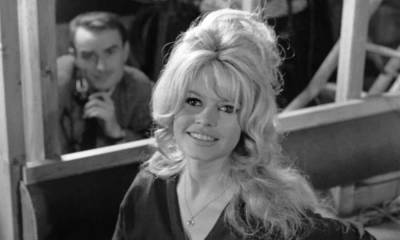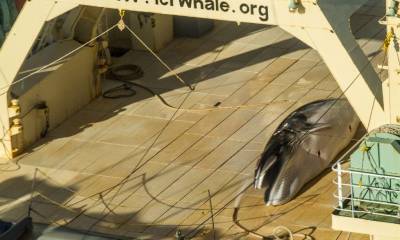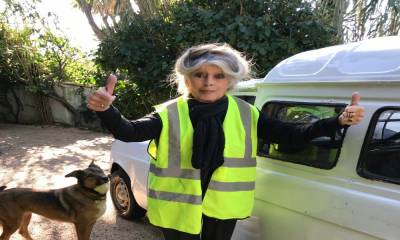Celebrity News
Playing it safe in Mexico
[ “900” padding=”10px 10px 10px 10px” rounded=”5″ border=”true” align=”left” margin=”5px 0 10px 5px” bgcolor=”#0f1311″ bwidth=”2″ bcolor=”#7e9a81″
[dcs_heading size=”6″ align=”left” Here’s a new article
Playing it safe in Mexico
By Andrea Sachs The Washington Post Shortly before Arnoldo Pedroza was scheduled to lead a tour south of Mexico City, the local guide started to worry that recent disturbances would sabotage his trip. He followed news updates anxiously, hoping that the area would cool off and officials wouldn’t ban visitors. You’re thinking drug cartels, vendettas and gunfire? Wrong. Pedroza was worried about spraying lava, not flying bullets.
Shortly before Arnoldo Pedroza was scheduled to lead a tour south of Mexico City, the local guide started to worry that recent disturbances would sabotage his trip. He followed news updates anxiously, hoping that the area would cool off and officials wouldn’t ban visitors.
You’re thinking drug cartels, vendettas and gunfire? Wrong. Pedroza was worried about spraying lava, not flying bullets.
“It is an active volcano,” said Pedroza of Popocatepetl, the volatile volcano up which he led a group of American mountaineers a few weeks ago. “I was afraid that it was going to pour lava, but it stayed quiet.”
Mexico’s second-highest mountain is an apt metaphor for the country itself: Despite threatening rumblings, danger doesn’t always materialize. Sometimes it’s even all in our heads. Yet misperceptions dog Mexico, which has been seriously shaken by the ongoing turf battles between drug cartels and the frontal-assault strategy employed by President Felipe Calderon’s government.
“There’s a big gap between perception and reality,” says Margot Lee Shetterly, a Hampton, Va., native who relocated to Mexico with her husband six years ago. “It’s a real shame for people to write off a whole country without looking at the map and at the statistics.”
Without a solid understanding of the geography (761,606 square miles) and the nature of the drug wars (internecine fighting), many foreigners assume that all of Mexico is a war zone. But it isn’t.
“The episodes of violence are in very specific pockets,” says Rodolfo Lopez-Negrete, chief operating officer of the Mexico Tourism Board, “and are unrelated to tourism.”
For proof, Lopez-Negrete rolls out the statistics, derived from a combination of government and non-government sources: Of 2,500 municipalities (what we call counties), only 80, or fewer than 5 percent, have been affected by the drug war, which accounts for only 3 percent of all crime. Mexican cities are also safer than some urban centers north of the border: Mexico City, for example, has 8.3 homicides a year per 100,000 people. That’s fewer than Miami (14.1) and Chicago (16.1). On a global scale, Mexico is safer than many of its neighbors. In 2008, the United Nations Office on Drugs and Crime reported Mexico’s homicide rate as 11.6 per 100,000, significantly lower than Honduras (60.9), Jamaica (59.5) or El Salvador (51.8).
But these figures don’t negate the fact that some places in Mexico are extraordinarily dangerous — so dangerous that they should be mummified in crime tape.
“We are very much focused on Mexico,” says Hugo Rodriguez, chief for Western Hemisphere Affairs in the State Department’s Office of American Citizens Services. “Providing U.S. citizens traveling to and living in Mexico with accurate information about the security situation there is a high priority for us.” The agency’s travel warning on Mexico, last updated in April, specifies the dangers by state, delineating the possible threats to Americans, 4.7 million of whom visited from January through October.
Yet countless tourists balk at the border, unsure of where — or whether — to go.
Well, we’ll tell you. We spoke to security experts, tour operators, government officials and expats for advice on where you can comfortably kick off your sandals and places you should avoid or explore with caution.
One quick PSA: No matter the destination, always be aware of your surroundings and follow the commandments of common sense: Register with the U.S embassy, don’t walk in the dark alone, keep the bling at home, etc. Street crime, like multiple days of rain or a vengeful plate of beans, can really ruin a good vacation.
About 90 percent of tourists flock to the beach resorts on both coasts, says Lopez-Negrete. Nor will you be disappointed. The majority of beach resorts, especially along the Caribbean Sea and the Gulf of Mexico, are sheltered oases.
“Quintana Roo and the Mayan Riviera are safe by Mexican standards and safe by Latin American standards,” says Pablo Weisz, regional security manager for the Americas at International SOS and Control Risks, referring to the state and nickname of the major beach destinations.
Mark these in your vacation planners as safe: Cancun, Cozumel and Playa del Carmen on the Yucatan Peninsula, and on the Pacific side, Puerto Vallarta and Cabo San Lucas. Some spots left out of the glossy brochures also make the list, such as the colonial city of Campeche, a World Heritage Site on the gulf, and Merida, a city west of Cancun on the Yucatan. In addition, most day trips from the strands, including outings to the Mayan ruins, also occupy the lowest rung on the risk ladder. These excursions include Tulum, Uxmal and Chichen Itza.
“I would take my family to these areas,” says Temo Tarrago, an Americas risk specialist with iJet, a global security risk assessment firm, offering the ultimate stamp of approval.
The open lanes of travel don’t lead only south; they also wiggle inland, to colonial towns delightful with culture, crafts and heaping plates of regional cuisine.
“Leon is large, safe and modern, but is also 400-plus years old. It’s the country’s leather capital; there is outstanding shoe shopping,” Shetterly wrote by e-mail. “From Leon, you have access to Guanajuato (World Heritage Site), San Miguel de Allende and even Queretaro.” The experts also place smiley-face stickers next to the state of Chiapas, home to ruins, biosphere reserves, textiles and the cultural city of San Cristobal de las Casas.
Finally, Oaxaca dominated 2006 headlines because of protests gone awry, but the city known for its culinary traditions (pass the mole) has calmed down. The teachers union still strikes periodically, but the protests are typically peaceful. If you’re considering going to Oaxaca soon, your timing couldn’t be better: The strikes have already taken place this year. All’s likely to be quiet until the next school year.
Pack your precautions for some areas that have improved substantially but still present slight risks.
Border town Tijuana has always worn a badge of dissolution, thanks to a spinning turnstile of partiers, drug suppliers and underworld denizens. But the government’s recent crackdown on the cartels has helped clean up the place.
“Tijuana is perfectly fine,” says Lopez-Negrete. “It has gone through a major renovation and transformation.”
Security experts agree on the metamorphosis but place an asterisk beside the town’s name. “It’s not as much of a concern,” says Weisz, “but that doesn’t mean that it should necessarily be considered safe.”
As safeguards, avoid low-end bars and drink or eat only items that have been prepared in front of you. Also, travel during the day and plan your modes of transportation in advance.
Mexico City is a beast of a different nature. The capital city of 20 million people isn’t pocked with drug-related skirmishes, but it does suffer from endemic street crime. Pickpocketing, shake-downs and kidnappings are common occurrences.
“It is a challenge by sheer size,” Tarrago says. “There are no drug cartels, but it does have organized crime.”
Tarrago reminds visitors to hire cabs only from authorized taxi stands and hotels, to keep valuables well hidden and to avoid unfamiliar places at night. “Know where you’re going and be aware of your surroundings,” says the Mexican native, recommending the upscale areas of Polanco and Las Lomas.
Although Guadalajara is unraveling and has experienced drug cartel-related activity, the violence hasn’t spilled over to Lake Chapala, less than 30 miles southeast. Ringed by small communities, the country’s largest freshwater lake draws retired North American expats and migratory birds to its shores.
“The security situation is kind of fluid,” says Tarrago, “but it’s not really affecting normal travelers.” That includes the American white pelican.
Drug cartels don’t target tourists; the battle is cartel vs. cartel and cartel vs. government. Yet sometimes innocent folks find themselves in the wrong place at the wrong time. The best way to avoid this unfortunate situation is to not go there.
So where aren’t you going? The towns along the border with the United States and along the Rio Grande, a line more than 1,200 miles long. One of the worst is Ciudad Juarez, where the current murder toll of six or seven a day is considered an improvement, according to Walter McKay, a Canadian expat who maps the narco-murders and posts the results on his Web site, Policereform.org.
While you’re crossing off names, draw a black mark through the entire state of Chihuahua, which accounts for 14 percent of the killings nationwide.
On the west coast, red flags wave in the northern areas of Baja California. Despite increased security — “They are better than they were before,” says Tarrago — travelers may come across military checkpoints and potentially sticky situations.
One destination now considered dangerous is tougher to fathom. In its heyday, Acapulco was the glittery playground of jetsetters and such silver screen royalty as Elizabeth Taylor and Brigitte Bardot. It later morphed into a spring break haunt. Now, its beaches are empty, its resorts devoid of guests — a casualty of heavy cartel violence. The State Department advises Americans to “exercise extreme caution when visiting downtown Acapulco,” but thoughtfully provides an alternative: Diamante, a few miles south of downtown. That tourist area’s major selling point: “It has not been affected by the increasing violence” in Acapulco — a paradise lost, at least for now.
![]() Loading …
Loading …
![]()


















